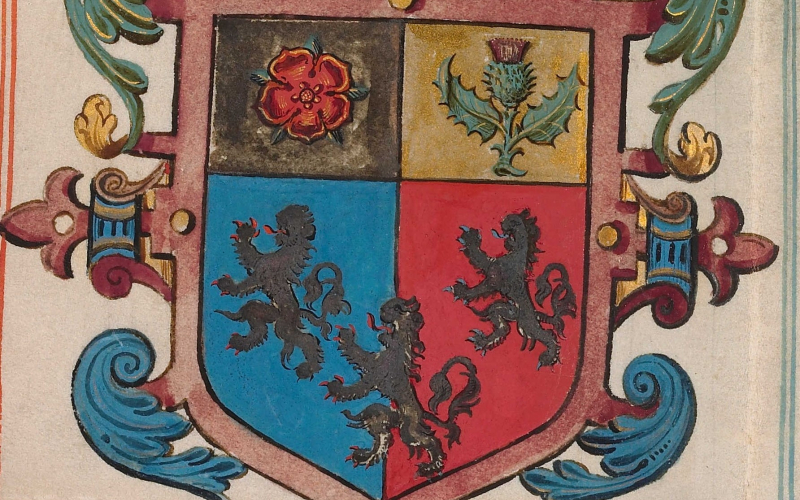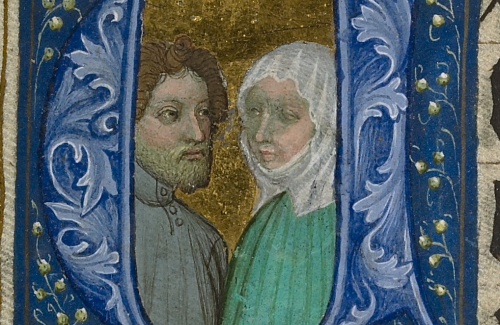#3 Grant of Arms
The Grant of Arms defines the college’s coat of arms. The description reads “Per pale azure and gules three Lyons rampant Argent, in a Cheife party per pale Argent and Or, in the first a Rose Gules, in second a Thistle of Scotland proper”
1. The document is dated 14 February 1625
2. It’s written on parchment in iron gall ink with coloured pigments and metallic foil
3. The document is 36cm wide and 27.5cm tall
4. It is issued by the College of Heralds, who maintain records of flags and coats of arms.
5. The Grant is signed by Sir Richard St George, Clarenceaux King of Arms from 1623-1635. He was a keen antiquary and collector of manuscripts and married Elizabeth St John of Lydiard Tregoze, Wiltshire in 1575.
6. Coincidentally, Can Court Farm in Lydiard Tregoze formed part of Pembroke’s original endowment!
7. The Grant carries the King of Arms’ seal of office. The Clarenceaux arms do not usually include a fleur de lys but one was added by St George’s predecessor, William Camden, from whom St George presumably inherited the seal
8. The rose and thistle represent King James I
9. The lions rampant represent the contemporary arms of the Earl of Pembroke
10. Early examples sometimes transpose the background colours of the upper quarters, one example being in the early Benefactors Book. This error was compounded by its inclusion in books such as John Burgon’s The Arms of the Colleges of Oxford, 1855

